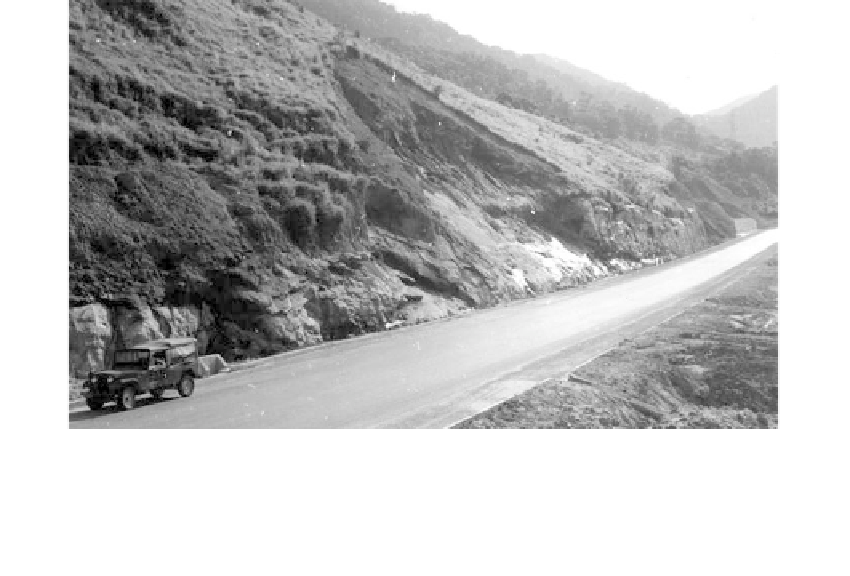Environmental Engineering Reference
In-Depth Information
FIGURE 9.46
Small debris-slide scar along the Rio Santos Highway, Brazil. Note seepage along the rock surface, the sliding
plane. Failure involved colluvium and the part of the underlying rock. The area subsequently was stabilized by
a concrete wall.
surface reaches to the crest of the hill. If uncorrected, failure often progresses upslope as
blocks break loose.
Examples of Major Failures
Pipe Organ Slide
Description
: The Pipe Organ slide in Montana (Noble, 1973) triggered by a railroad cut
made at the toe, involved about 9 million yd
3
of earth. The failure surface developed at
depths below the surface of 120 to 160 ft in a Tertiary colluvium of stiff clay containing
rock fragments, which overlay a porous limestone formation.
Slide movements:
During sliding, movement continued for a year at an average rate of 2
in./week, developing in a progressive mode. Total movement was about 12 ft and the
length of the sliding mass was 2000 ft along the flatter portions of a mountain slope.
Stabilization:
Movement was arrested by the installation of pumped wells, which were
drilled into the porous limestone and later converted into gravity drains. The water
perched on the sliding surface near the interface between the colluvium and the limestone
drained readily into the limestone and the hydrostatic pressures were relieved.
Golden Slide
Description:
A railroad cut into colluvium of about 50 ft thick caused a large slide near
Golden, Colorado (Noble, 1973). The colluvium is an overconsolidated clay with frag-
ments of clay shale and basalt overlying a very hard blue-gray clayey siltstone. The water
table was midway between the ground surface and the failure surface, and there was evi-
dence of artesian pressure at the head of the slide.
Slide movements:
Movement apparently began with a heavy rainfall and was about 1
in./day. Tension cracks developed in the surface and progressed upslope with time. About
500,000 yd
3
of material were moving within a length of about 1000 ft.
Stabilization:
Cutting material from the head of the slide and placing approximately
100,000 yd
3
against a retaining wall at the toe that penetrated into underlying sound rock


